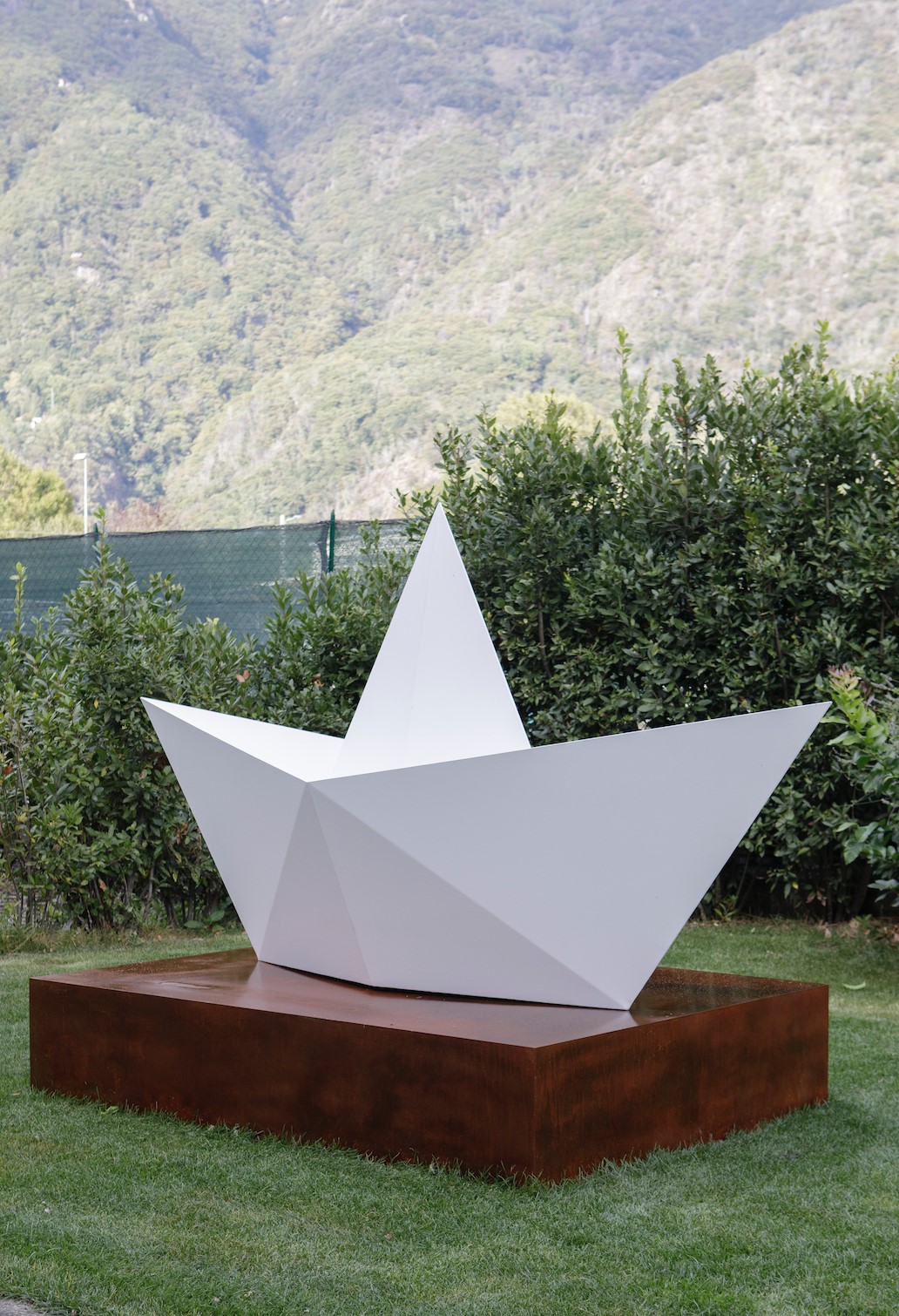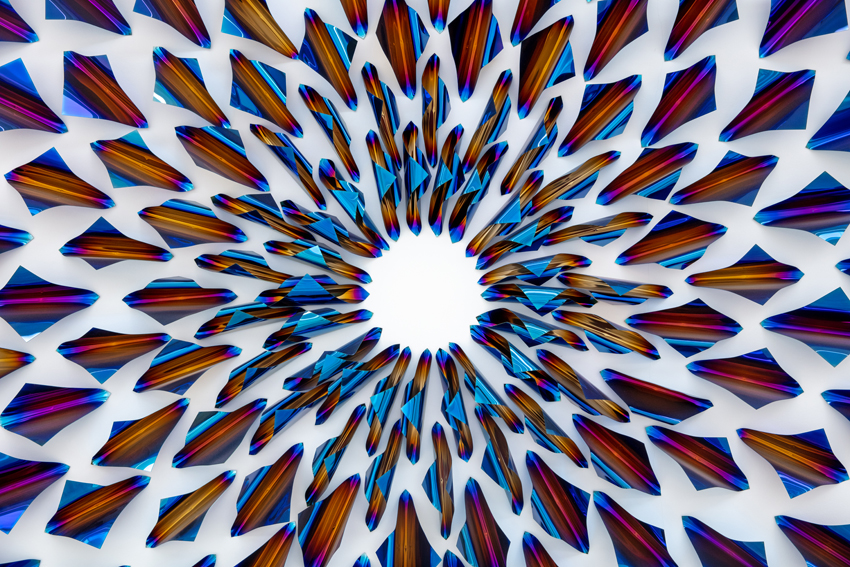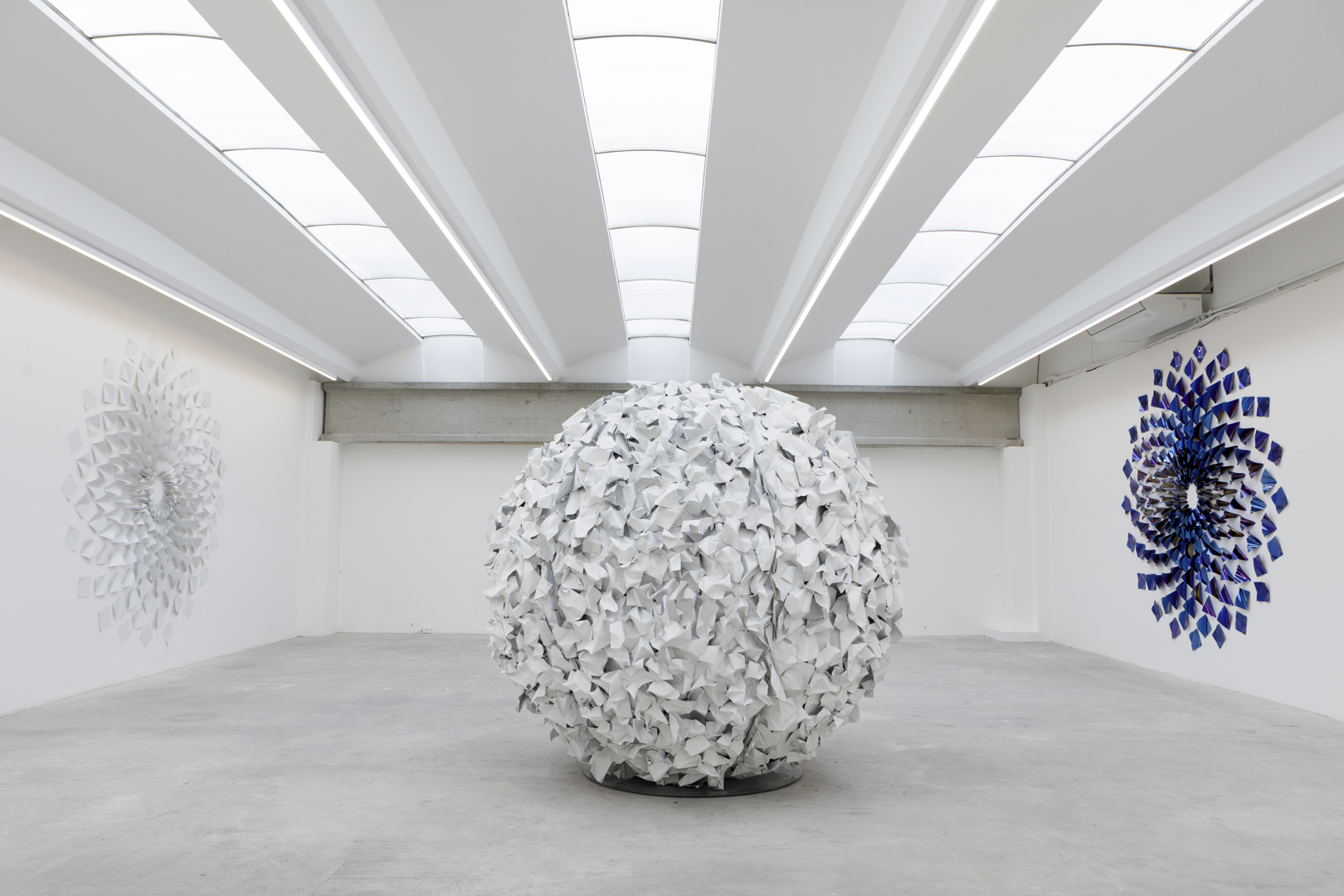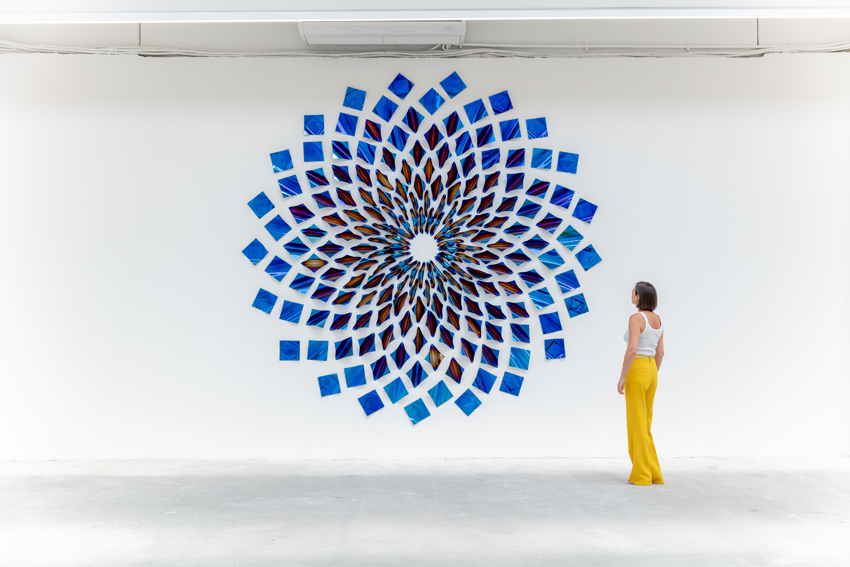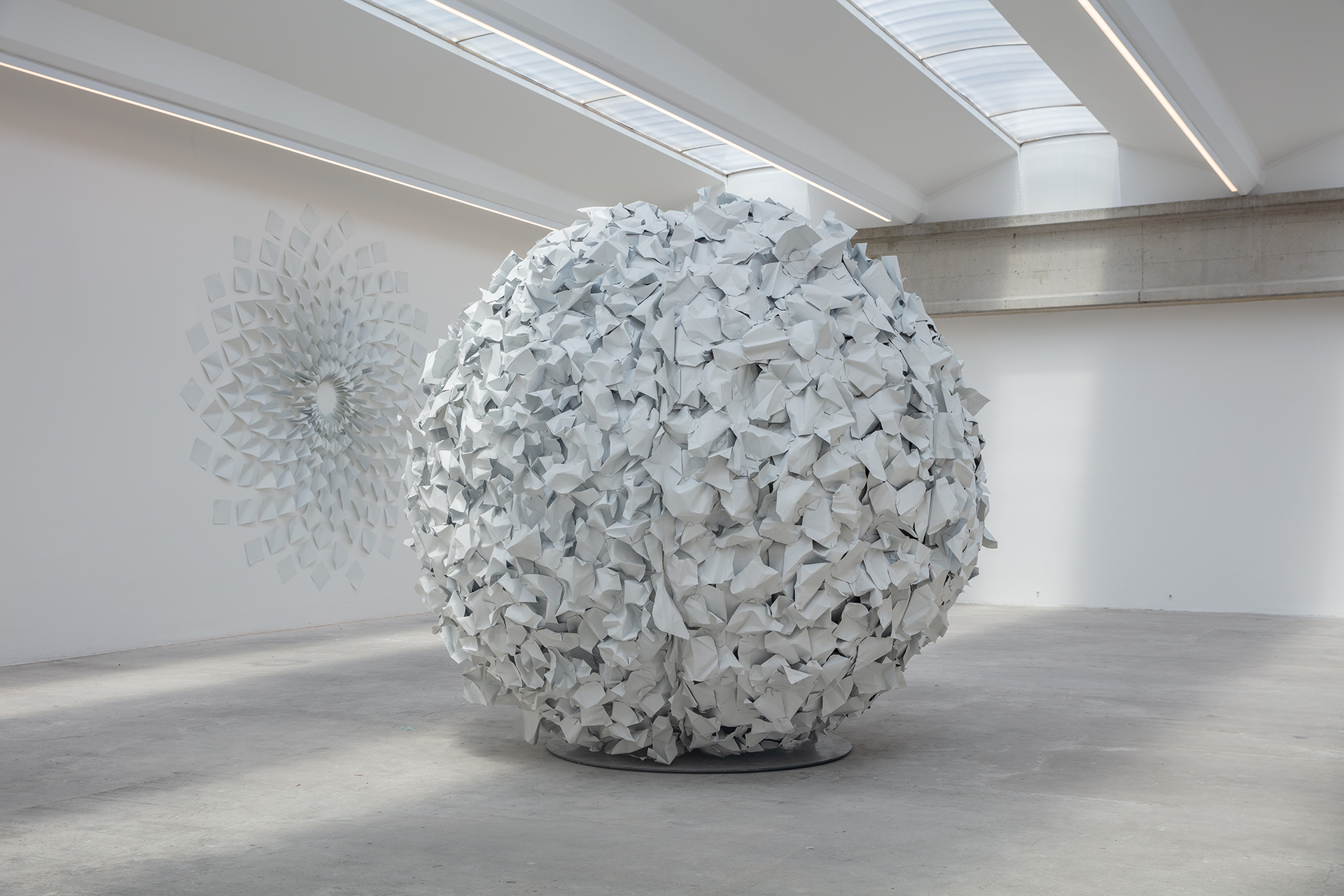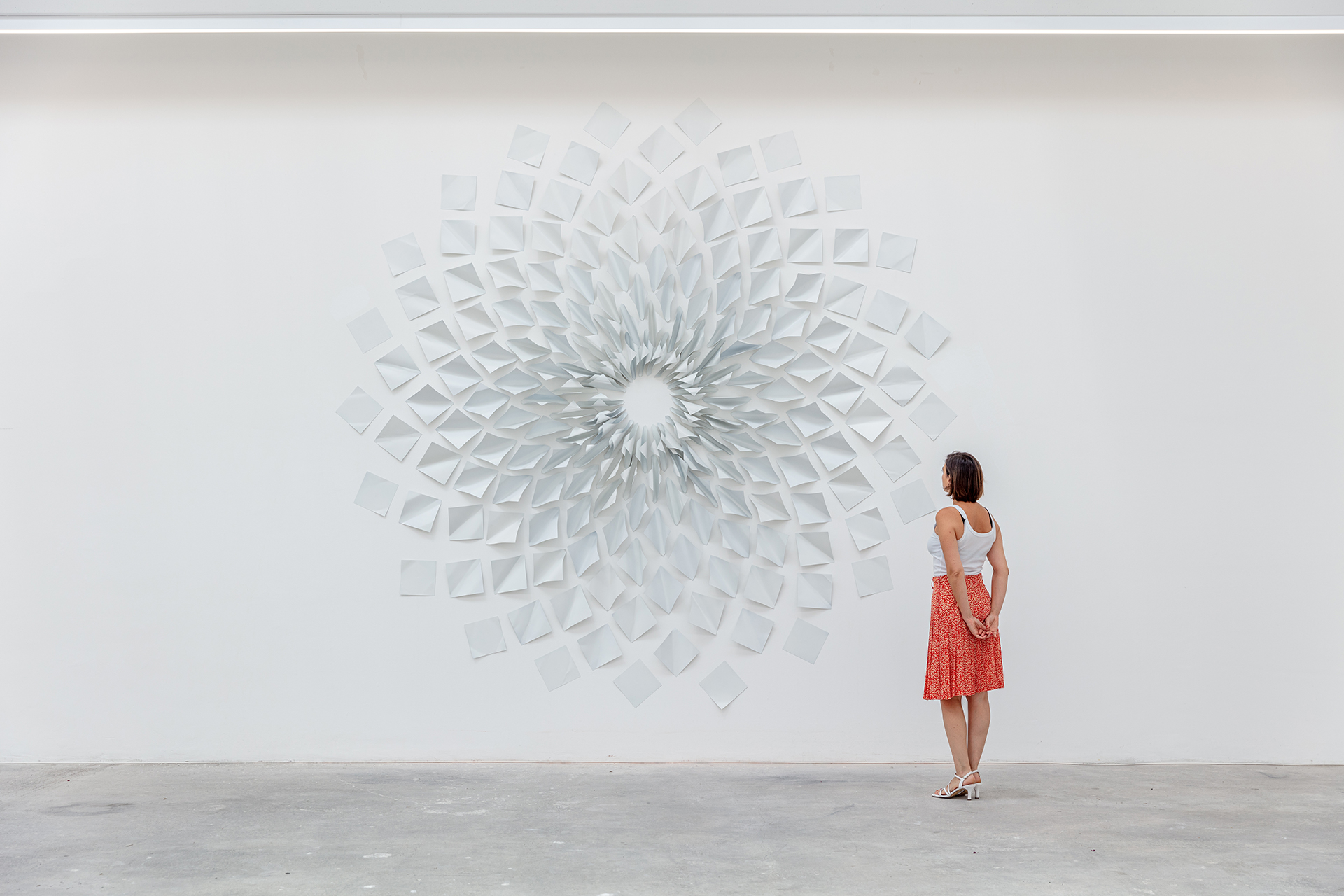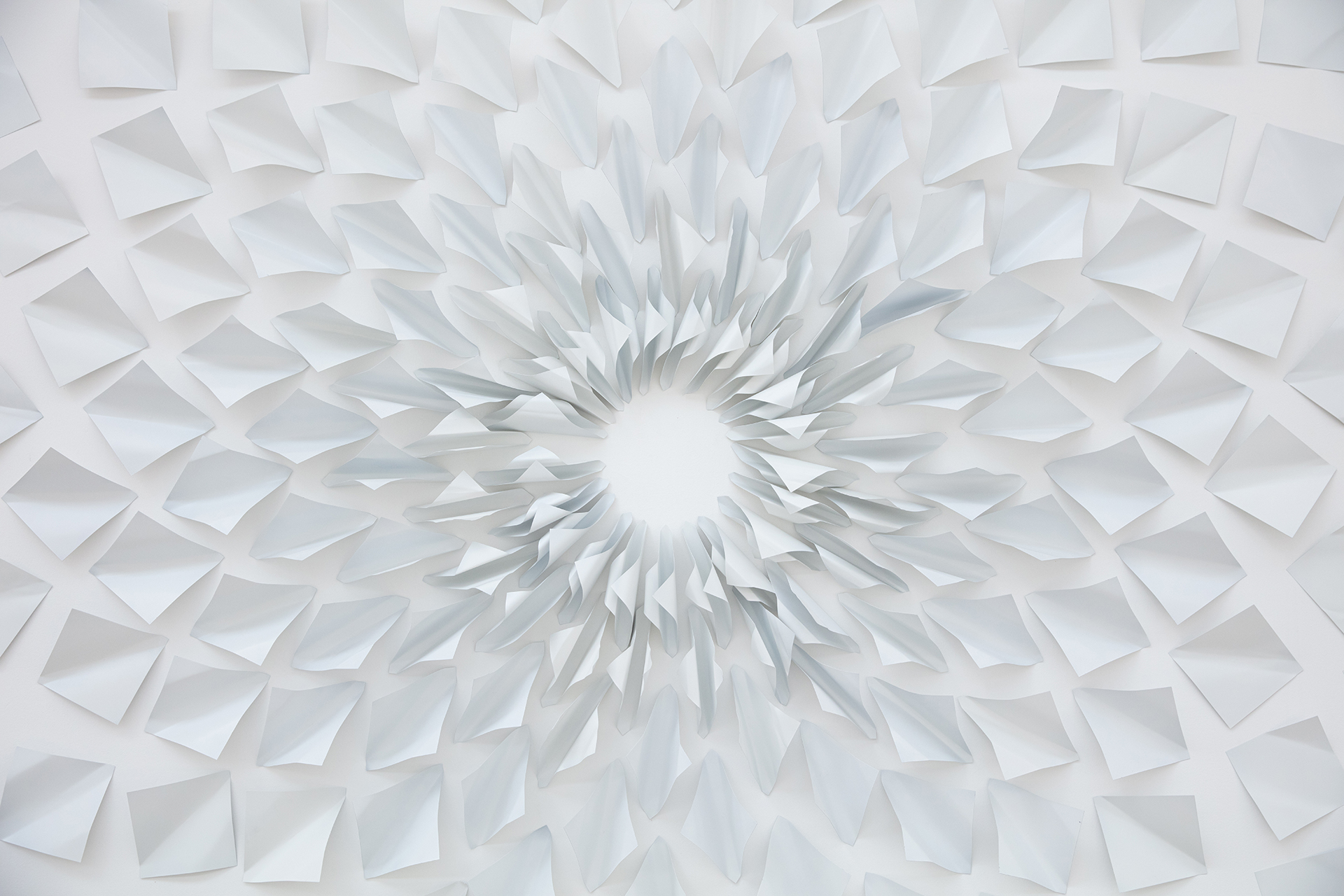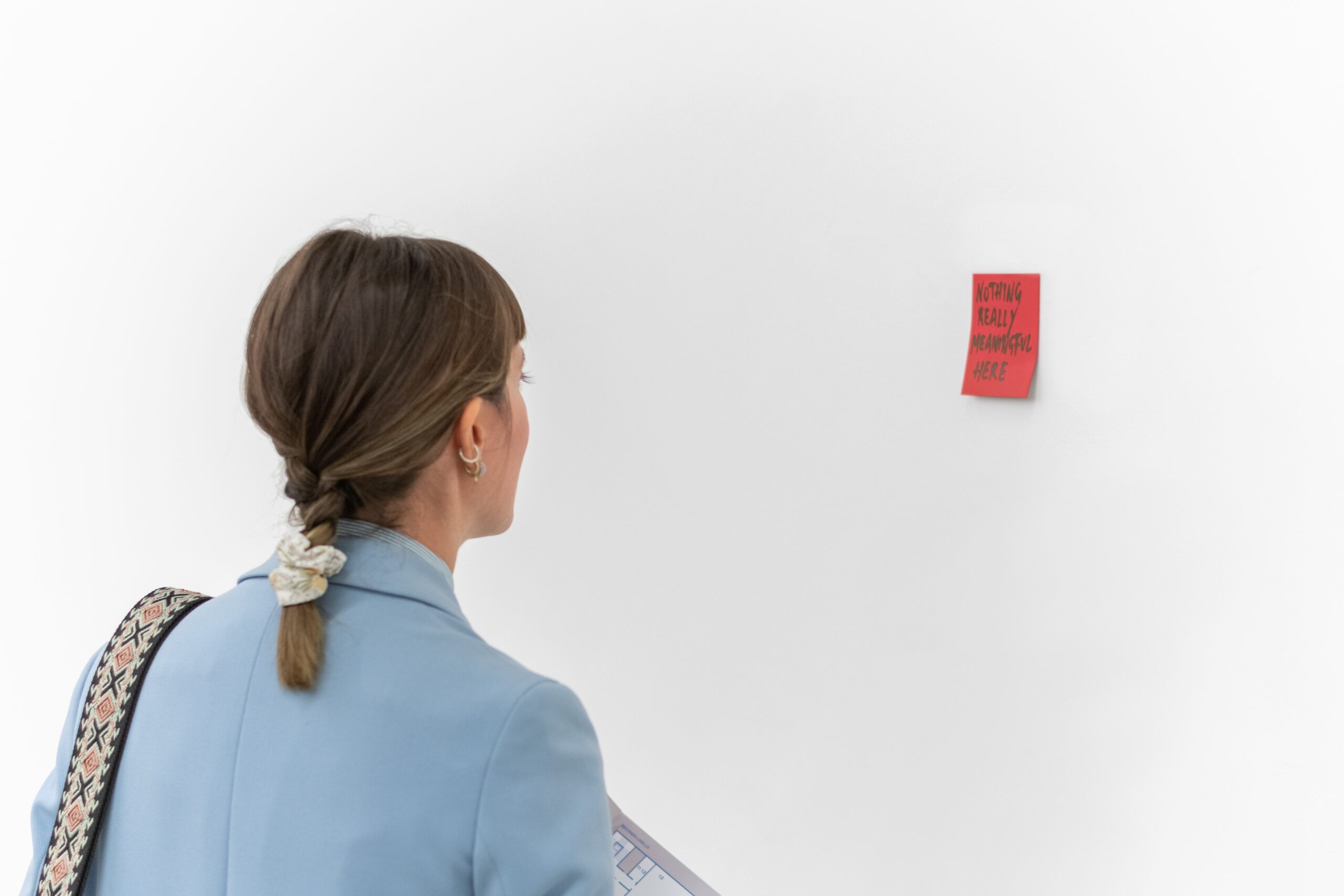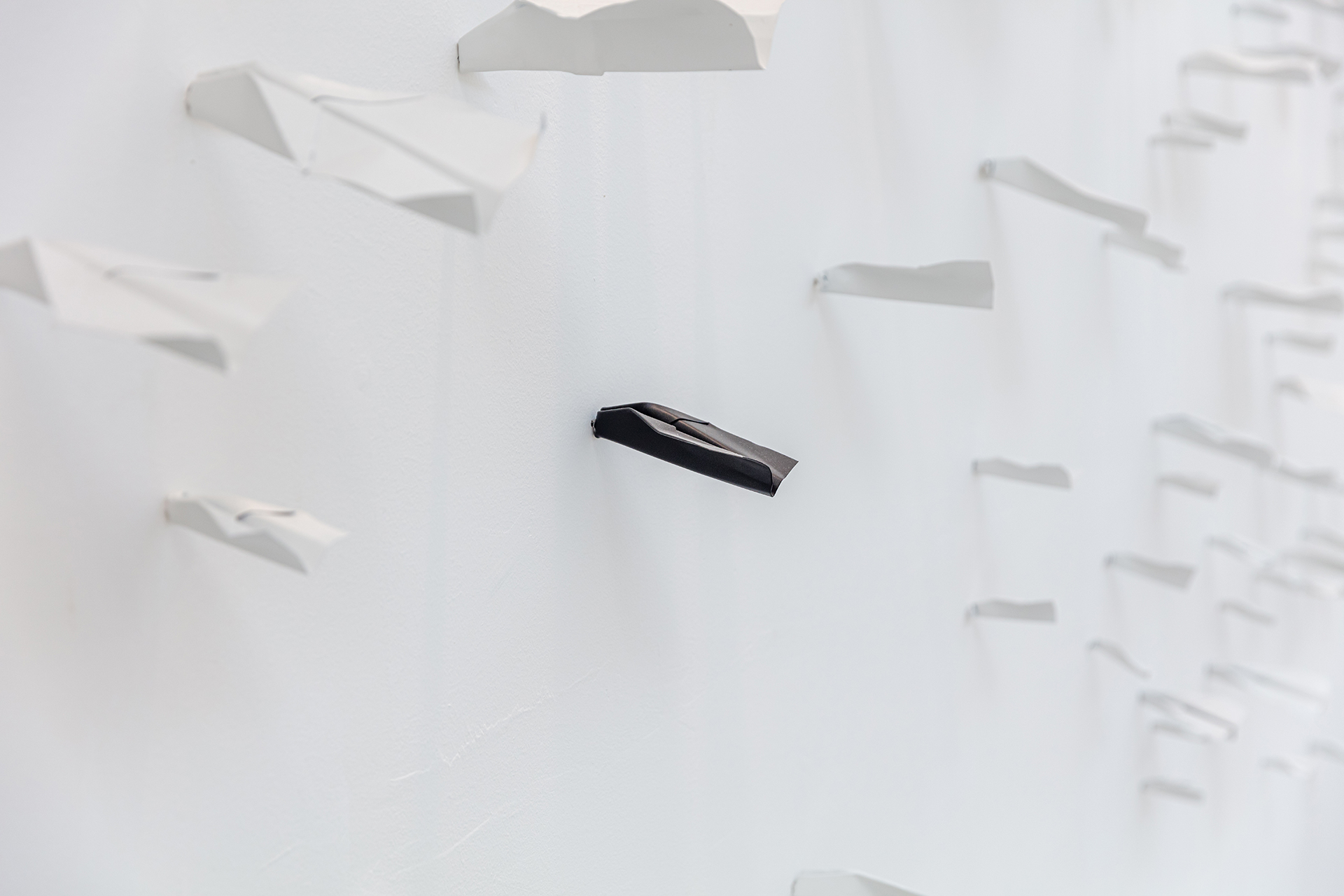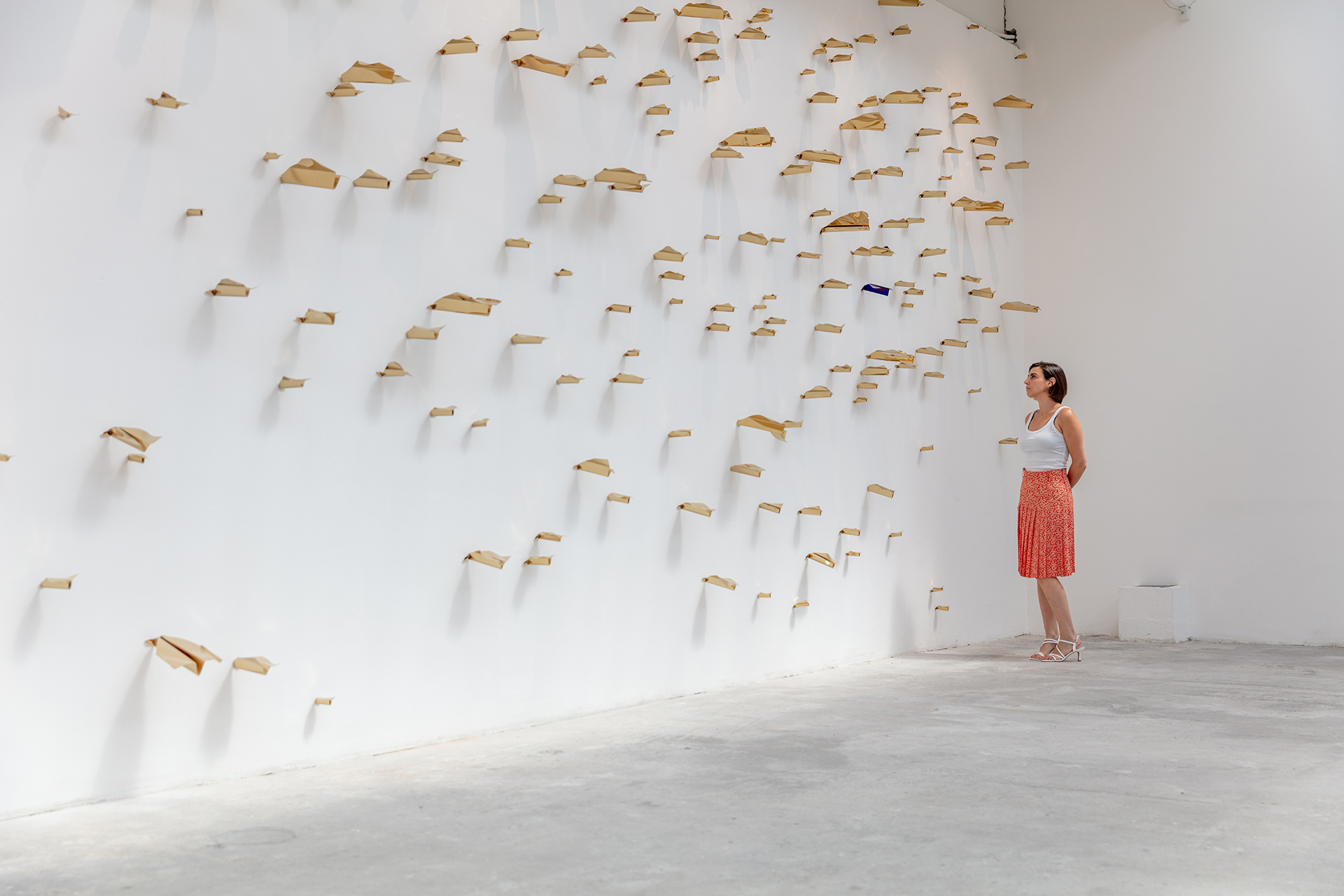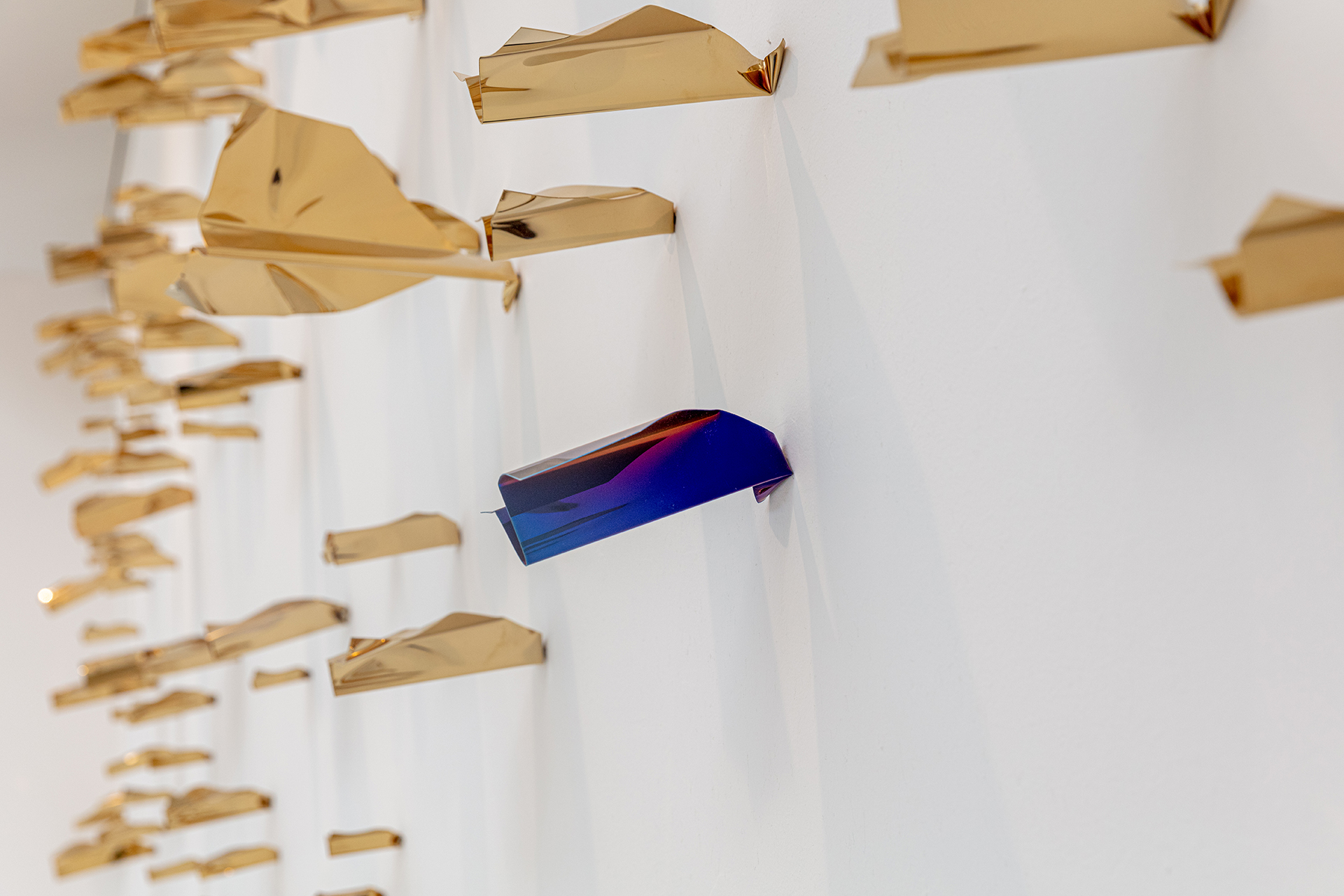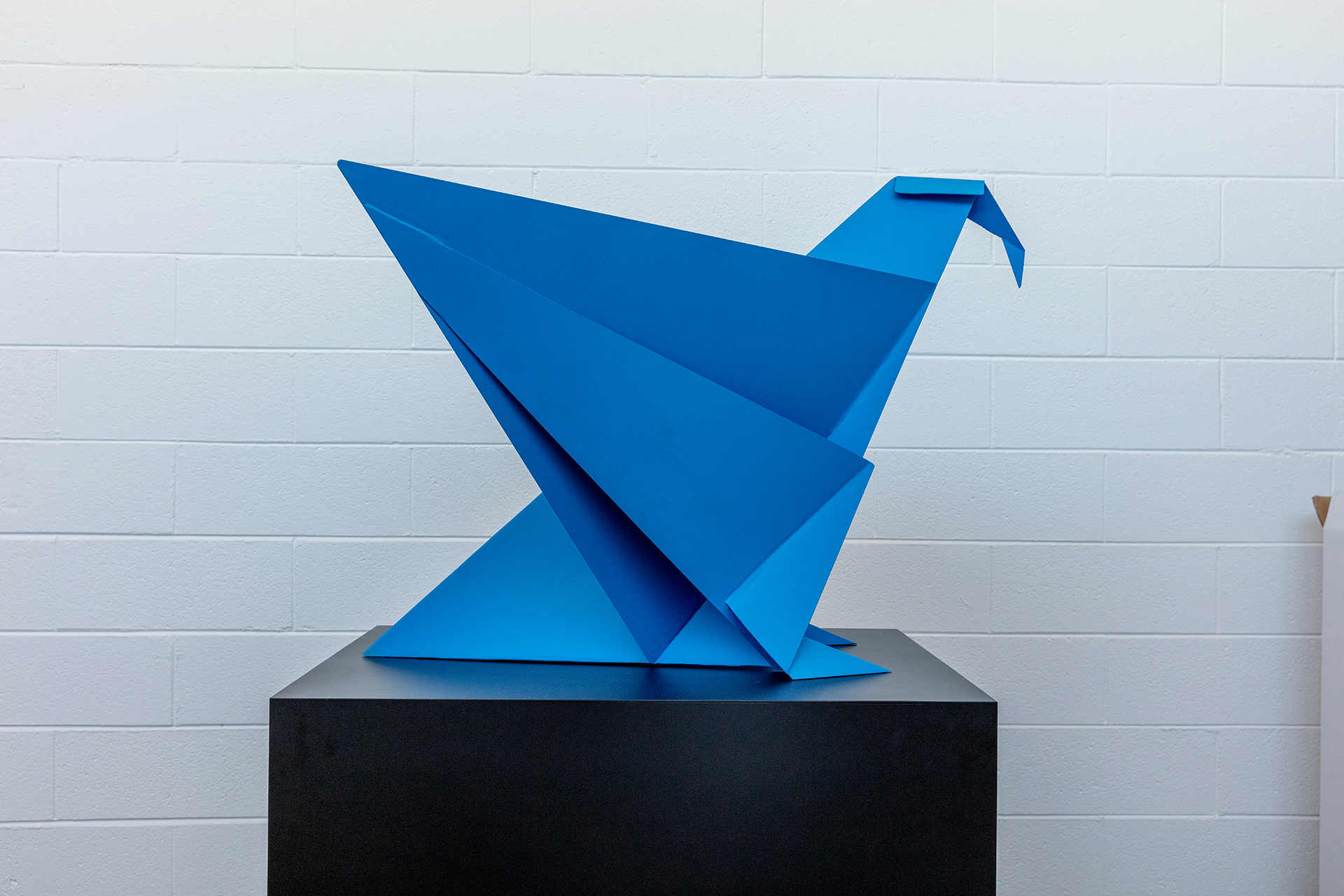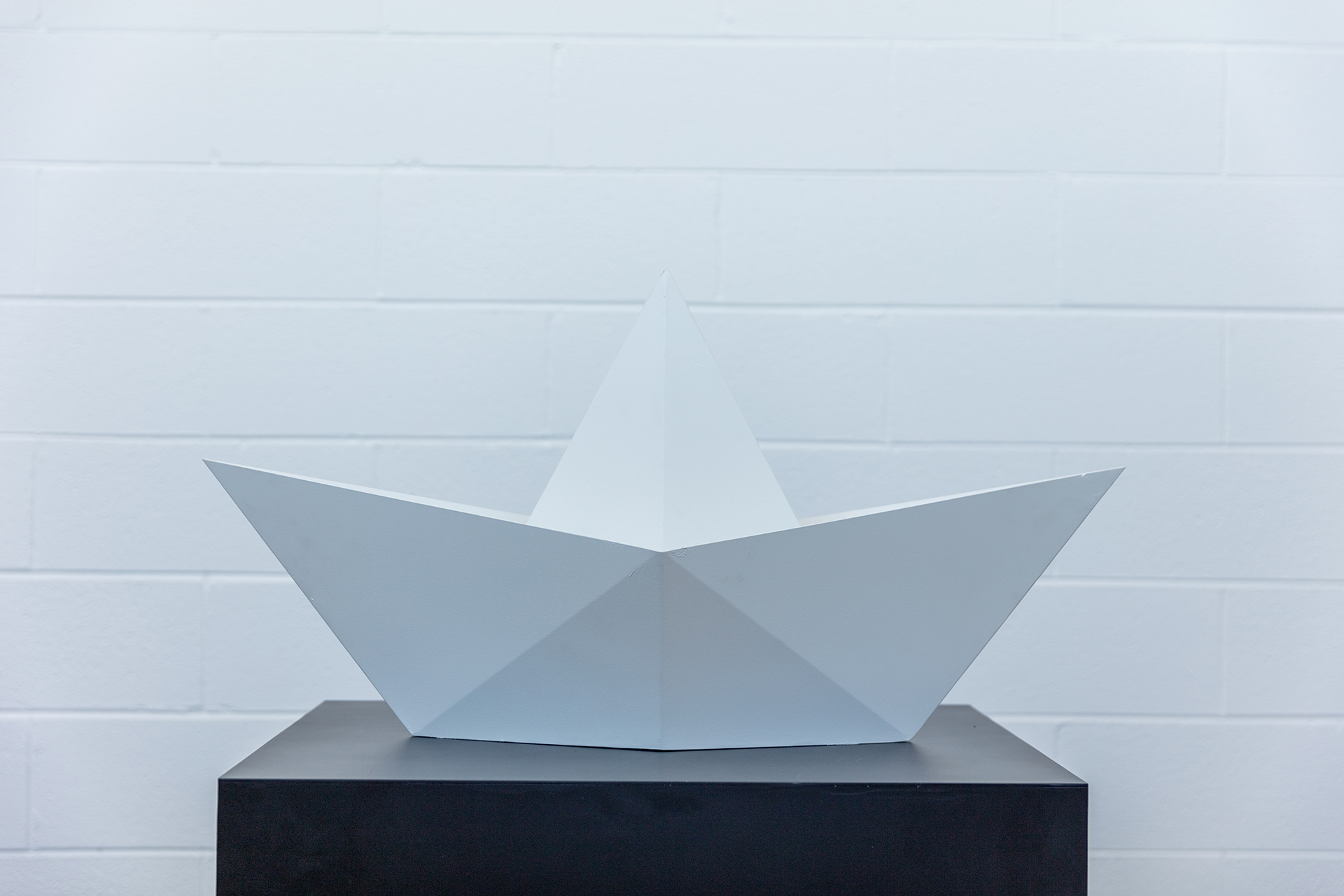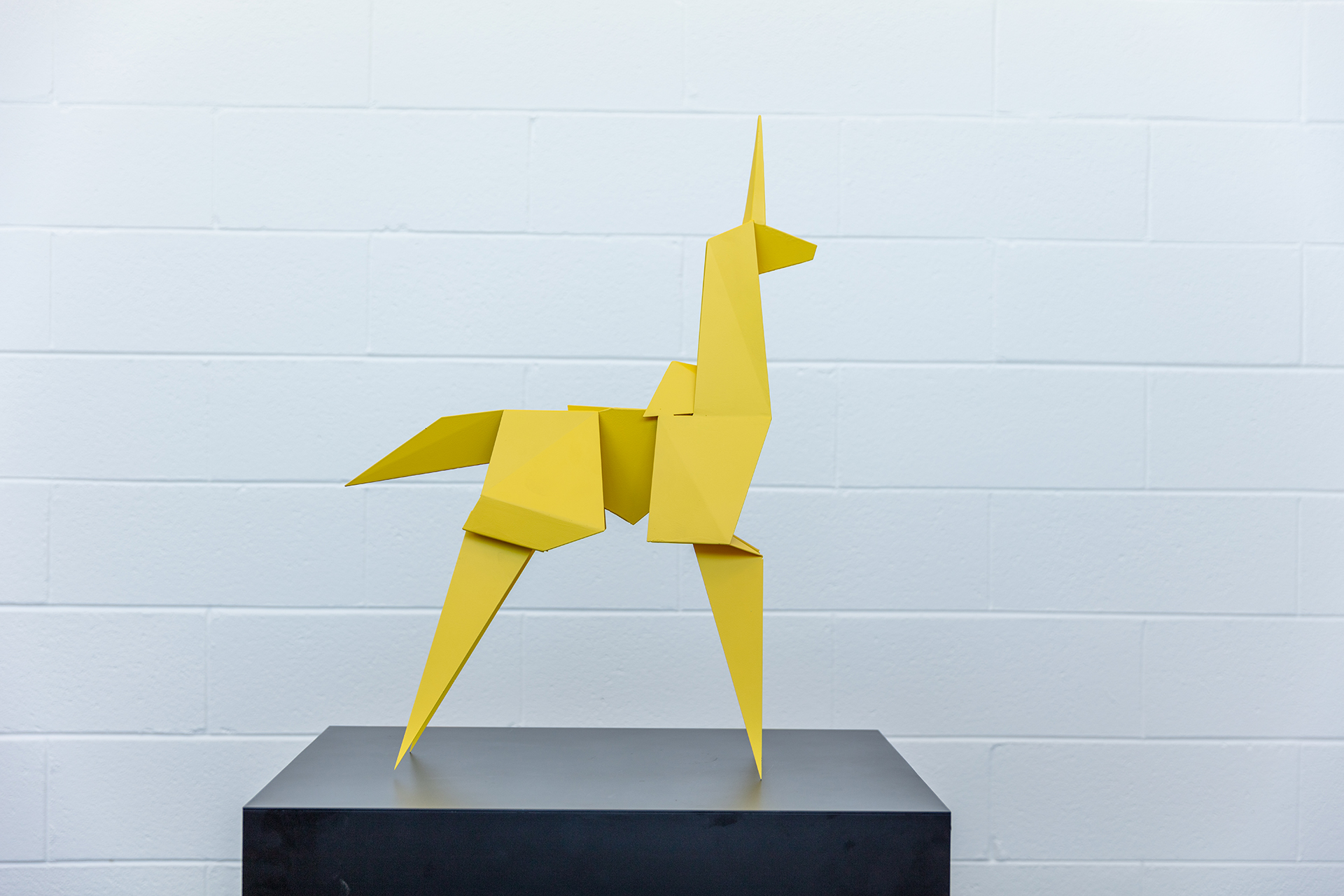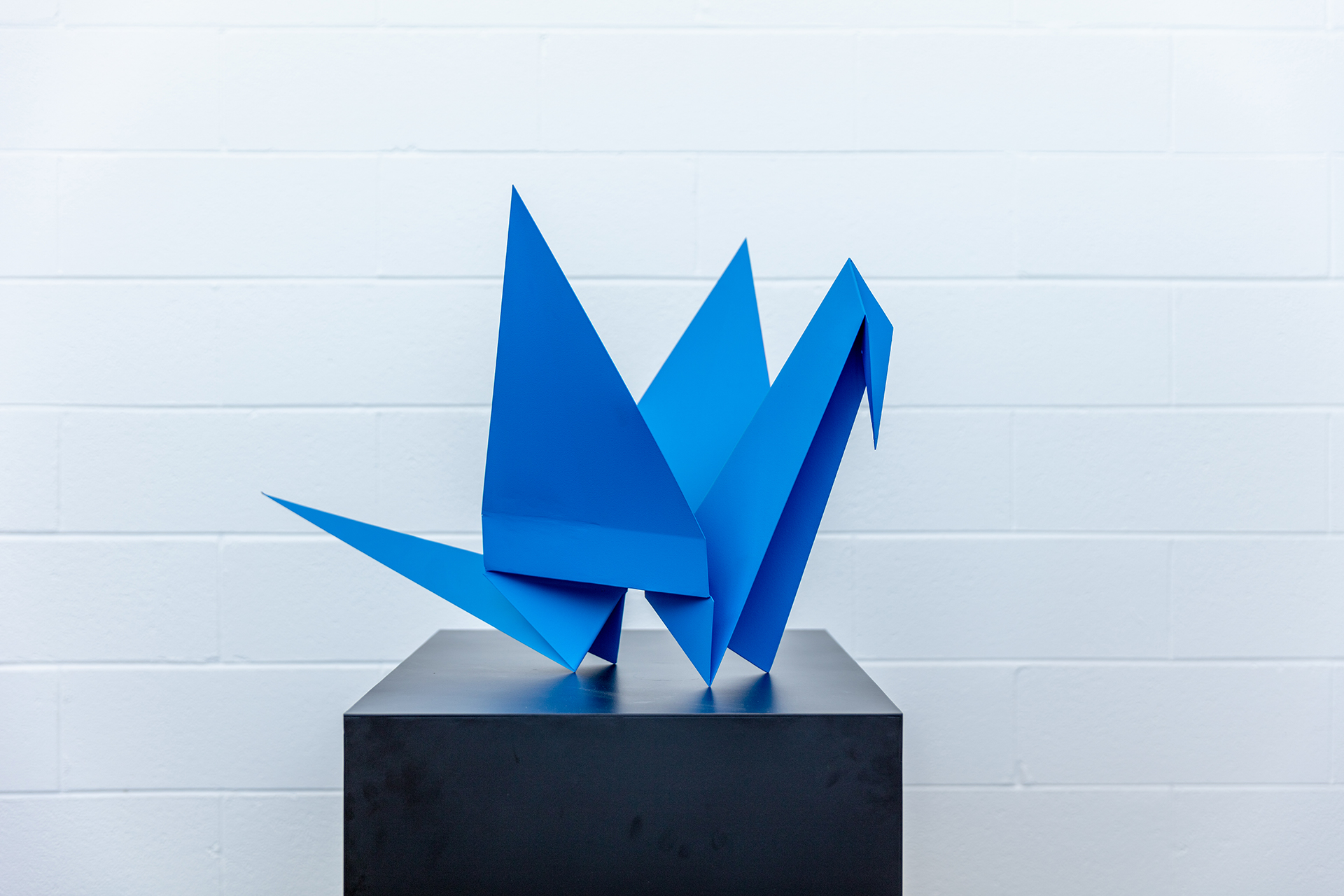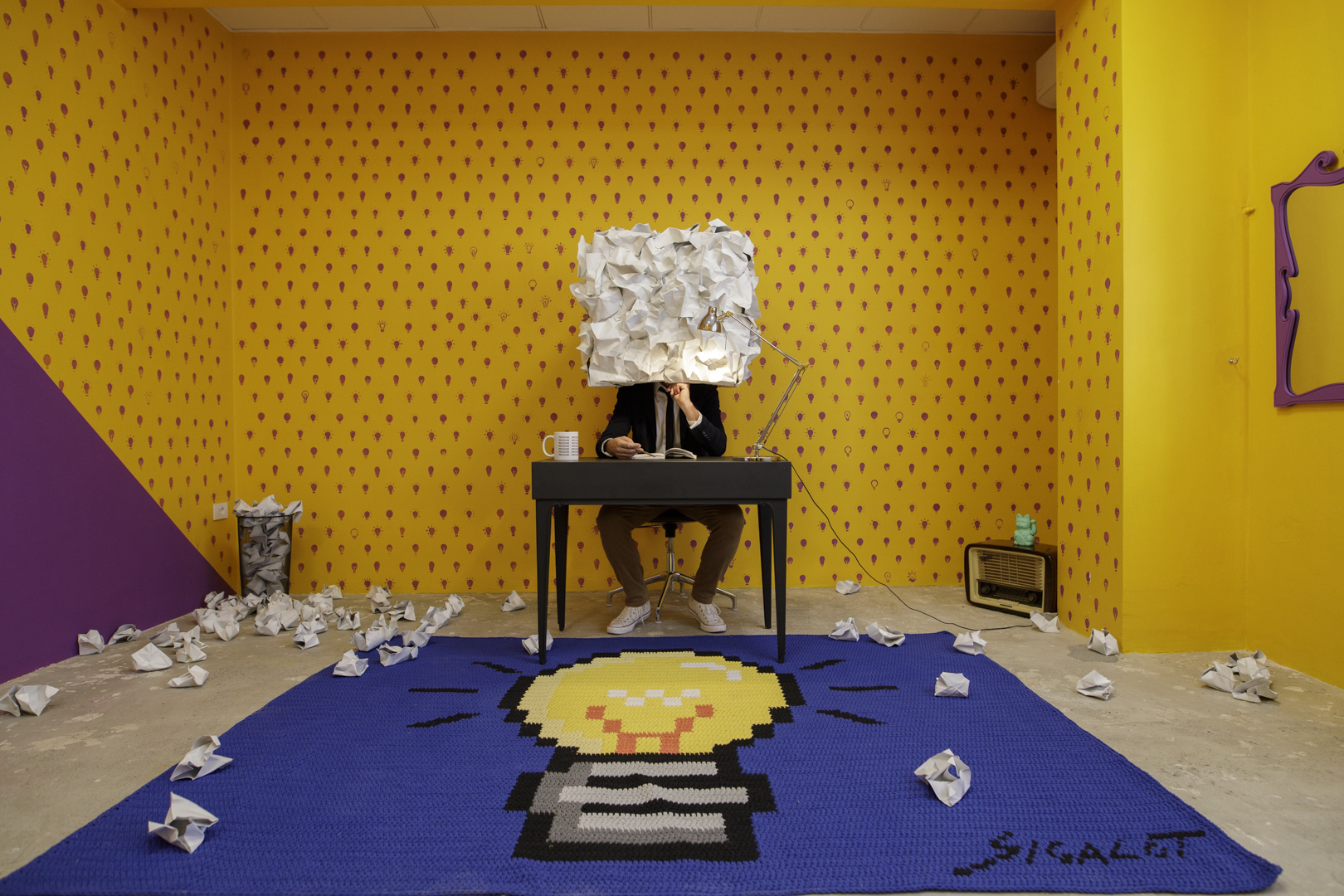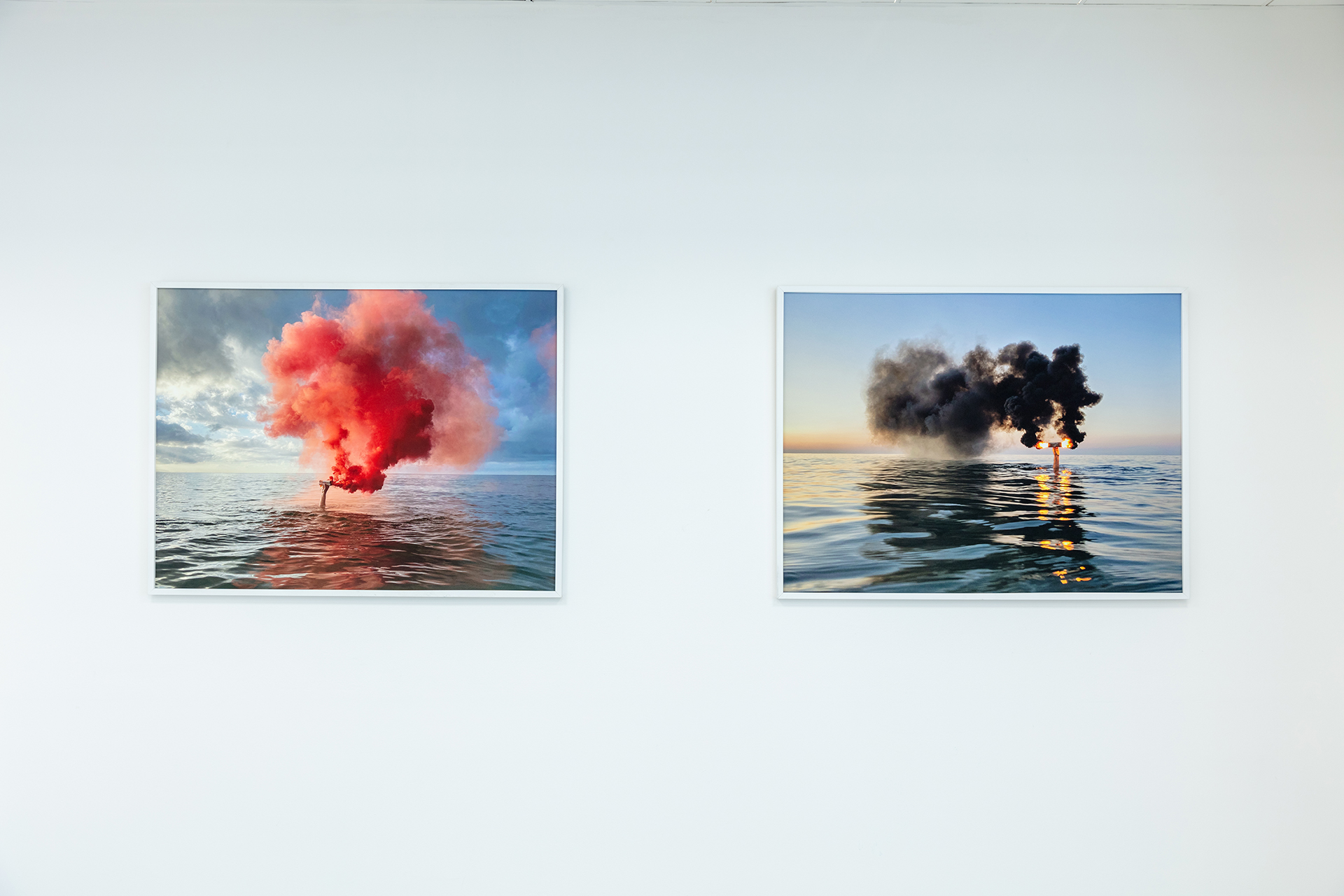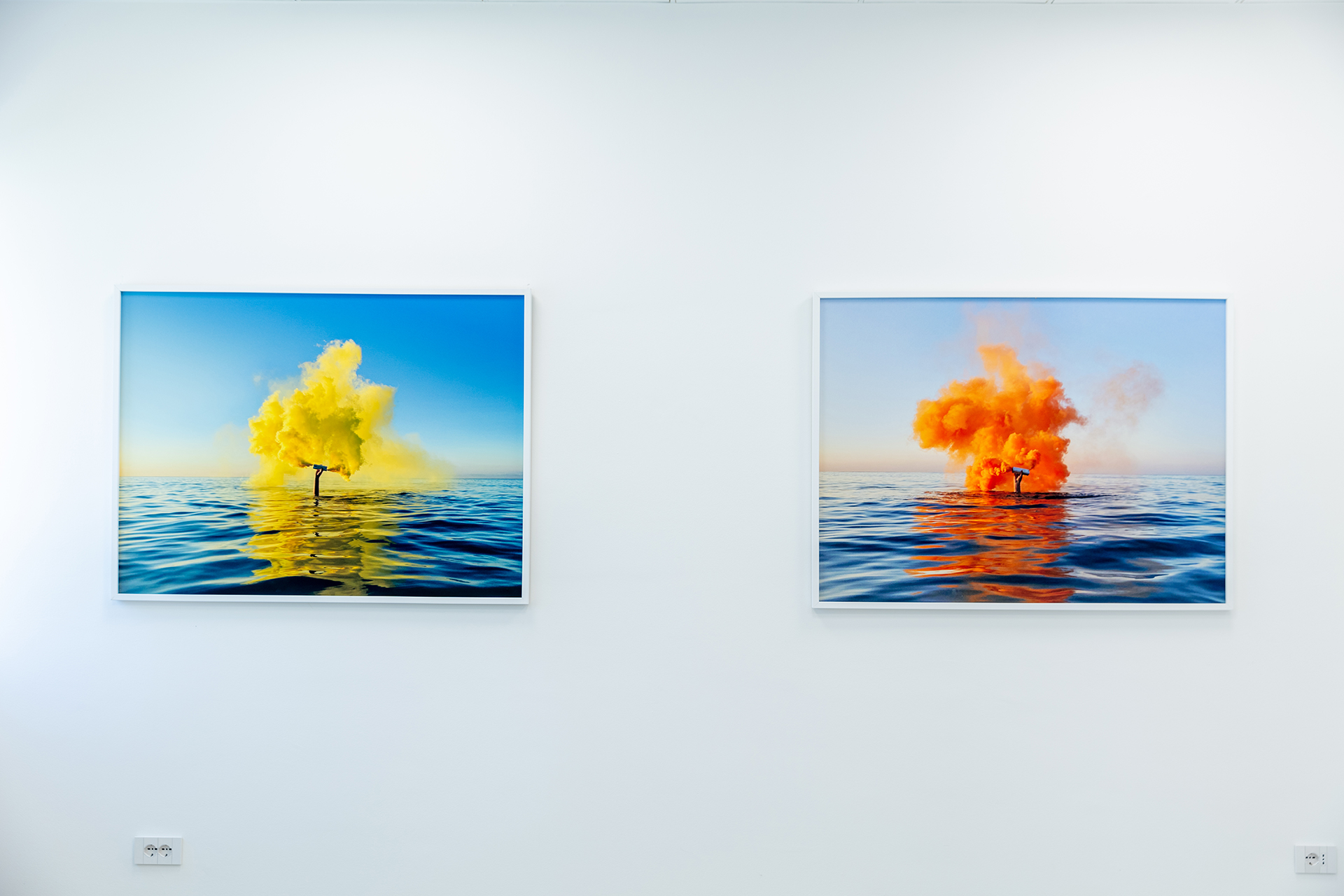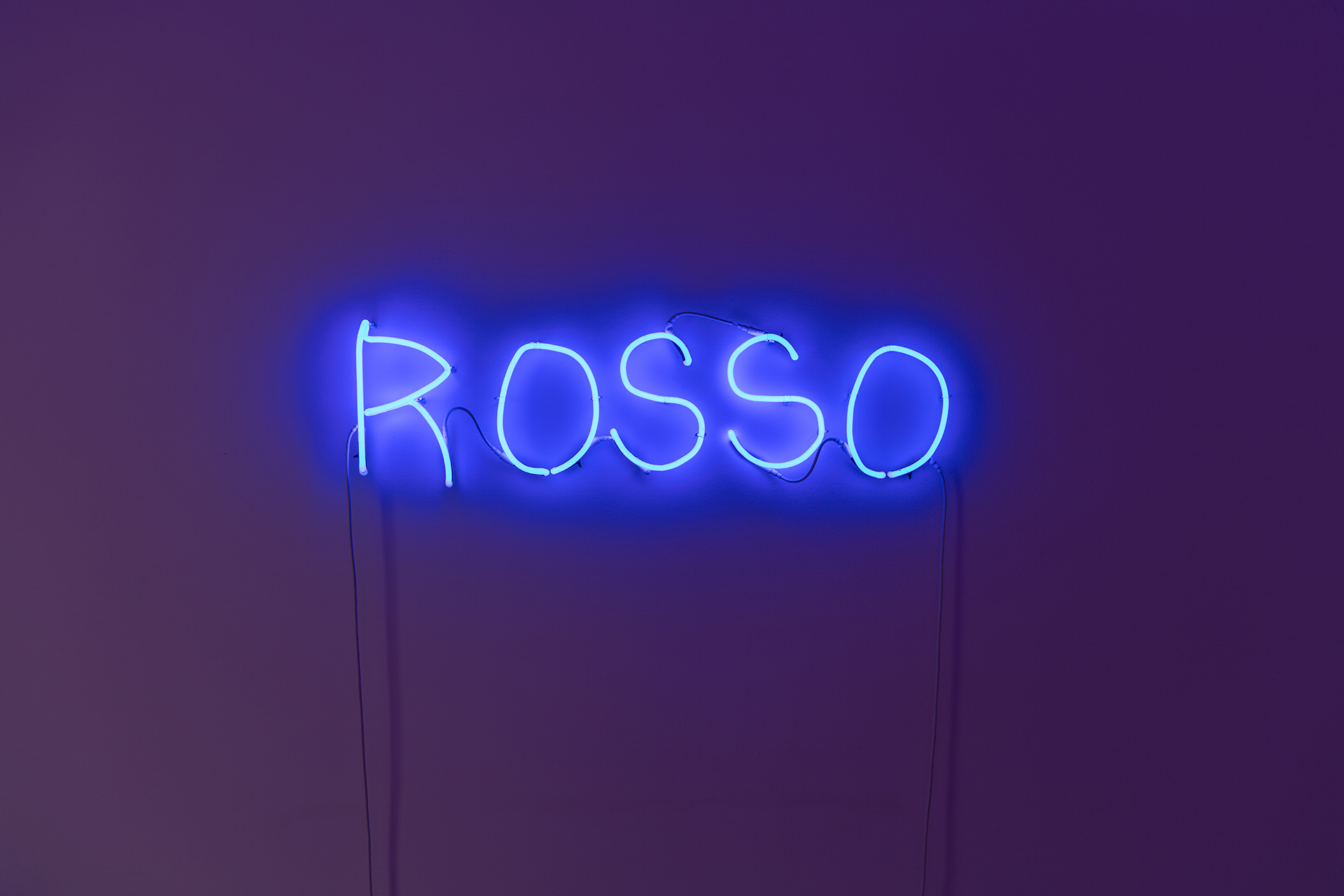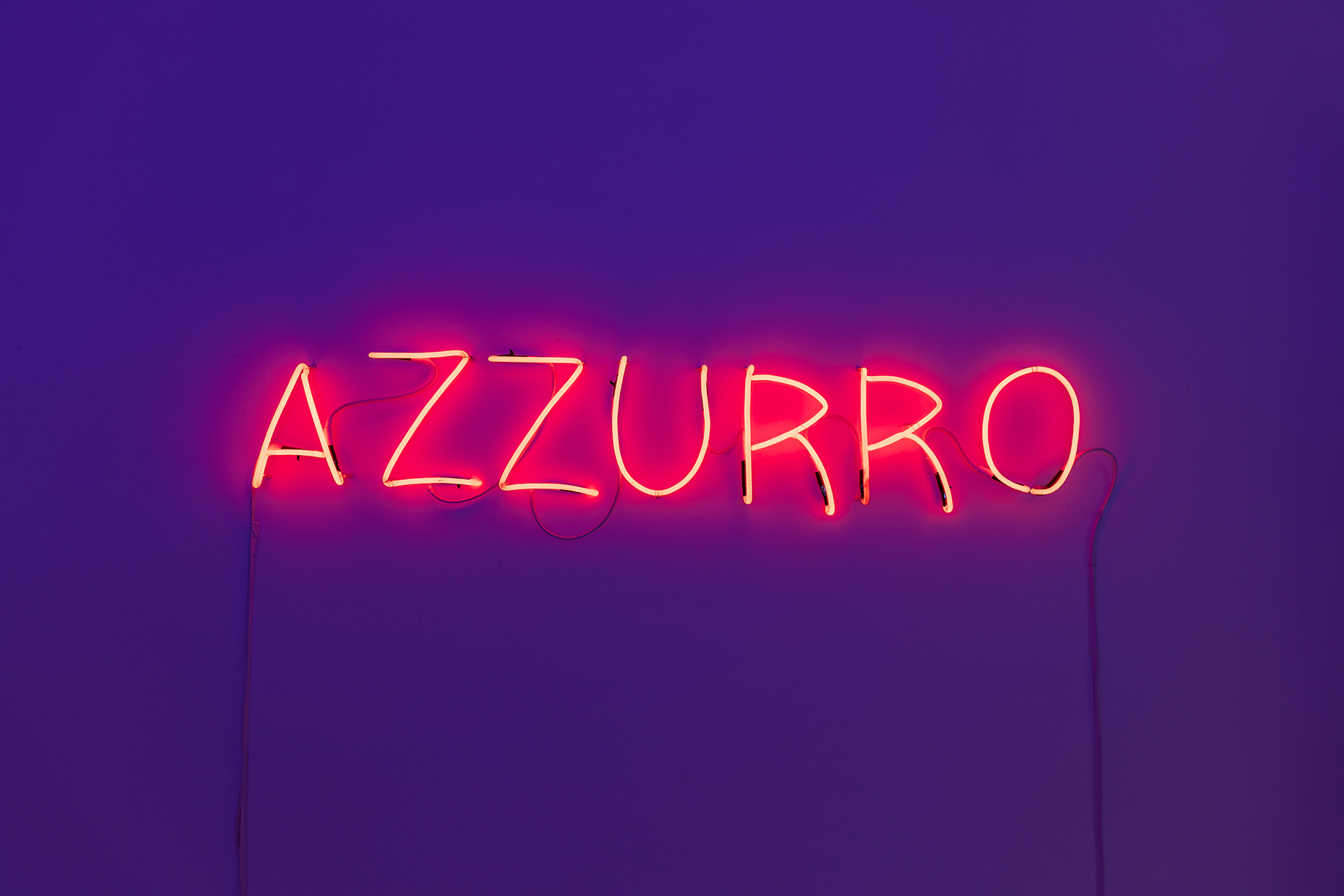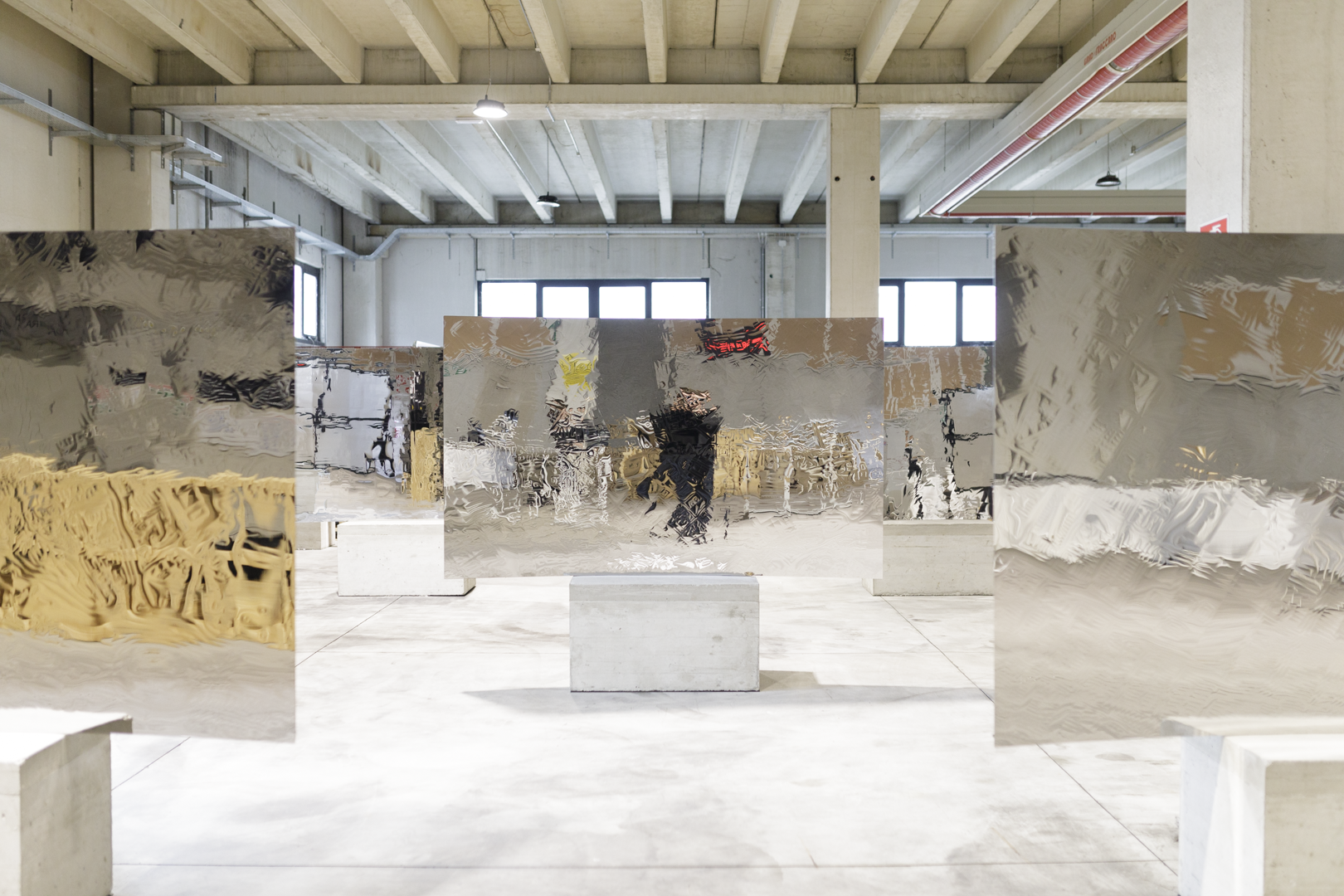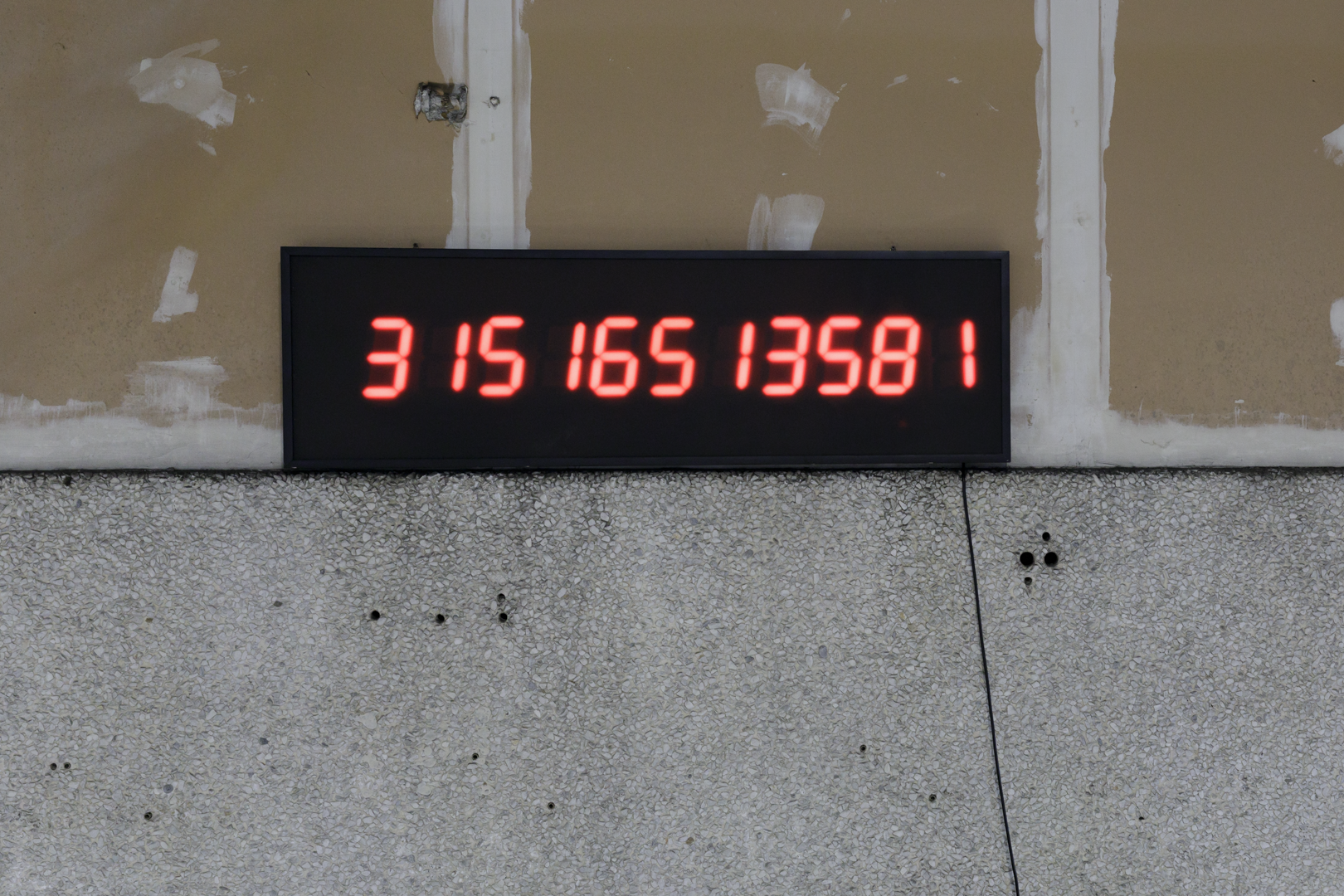WEM Gallery is pleased to announce OUT OF PLACE, a solo exhibition by Daniele Sigalot, which officially opens the gallery’s new exhibition space in Ornavasso, Lago Maggiore (VB).
From 1 October 2022, the exhibition will inhabit for the first time the more than 1,000 square metres converted inside the Magistris & Wetzel Spa factory, giving life to an innovative exhibition pole dedicated to WEM artists, in a context poised between art and industry.
OUT OF PLACE by Daniele Sigalot is the perfect synthesis of this oxymoron.
A lover of paradoxes, both aesthetic and interior, the artist presents a series of iconic works from his career, together with new works created especially for the exhibition. Sigalot gives life to a narrative that thrives on irony and provocation, on perceptual deception and alteration: a short-circuit of misunderstandings and paradoxes that reflects a present full of contradictions.
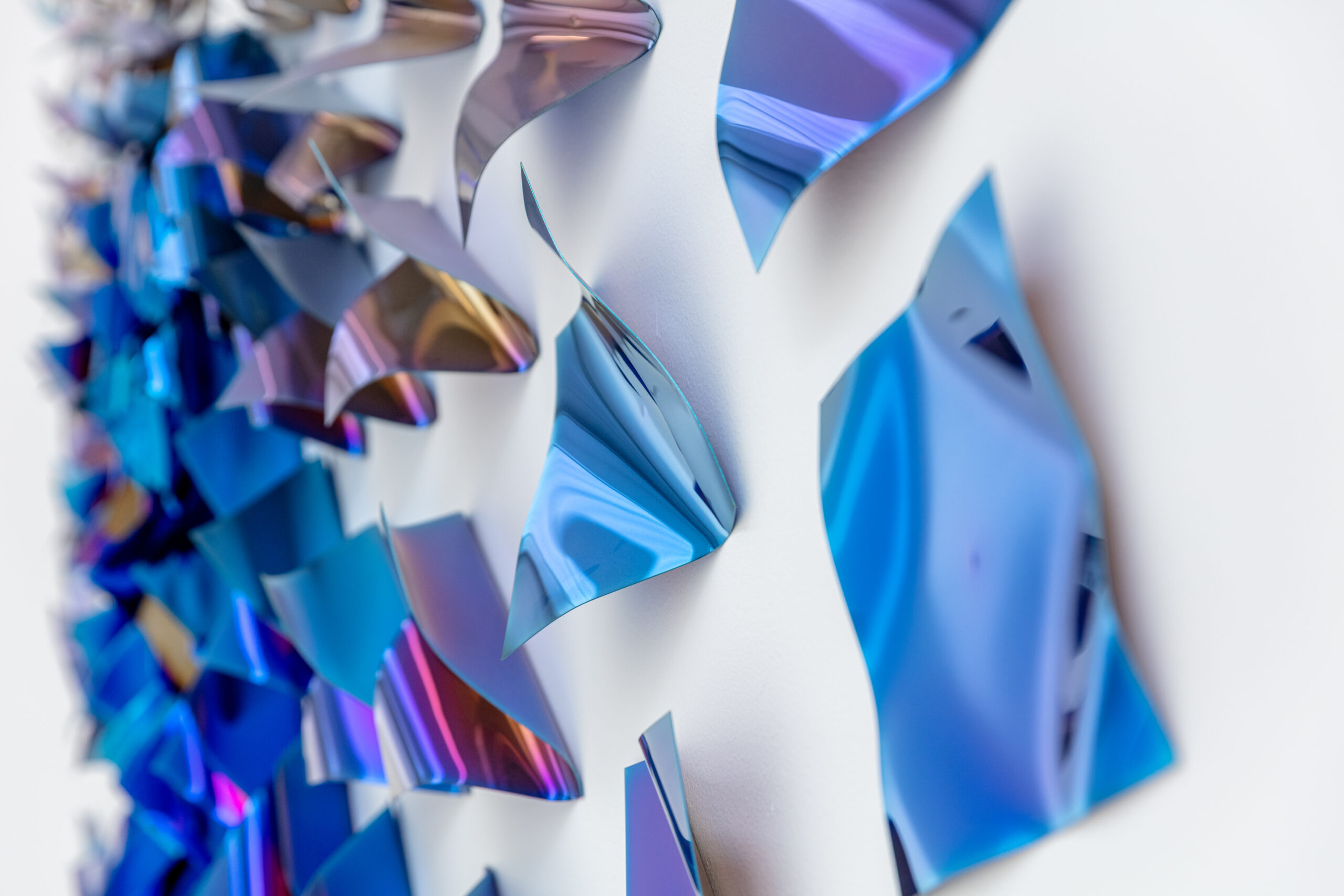
“The OUT OF PLACE exhibition is an exercise in which our thoughts jump, run, roll, tumble, coming out amused and a little shaken.”
Sonia Belfiore
La mostra
DANIELE SIGALOT. OUT OF PLACE
Text edited by Sonia Belfiore
OUT OF PLACE is the solo exhibition of Daniele Sigalot (Rome,1976), a dense and incisive show that highlights a selection of works emblematic and transversal of the artist’s research and that marks the inaugural appointment of WEM Gallery. Started in 2017 as a reception and production space for contemporary art, WEM takes a further step by establishing the gallery’s headquarters within the corporate spaces of Magistris & Wetzel. WEM opens the doors of its headquarters at a delicate and complex moment, focusing on the most urgent challenges of our present: investing in culture, investing in artistic production.
The works of Daniele Sigalot, an artist with whom WEM has been collaborating since 2017, are characterised by an ironic lightness, capable of giving life to dreamlike and impossible atmospheres. Through his works, the artist uses and mixes images and scenarios taken from everyday life, upsetting clichés and pop references to the point of giving them new meaning.
With a playful and insightful approach to life, the works on show crack a smile as they uncover a universe of emotions and oppositions. In fact, it is paradox that presses the exhibition’s fruition, a tool and a stimulus for reflection that the artist uses to reveal the weaknesses of discernment and the limits of reasoning. Often in history it has been paradoxes based on simple concepts that have led to great reflections and intellectual changes such as the discovery of new mathematical rules or new physical laws. In the same spirit, Sigalot’s works are not mere provocations, but profound reflections aimed at creating a relationship with the spectator and establishing a link between art and life.
Representative of the artist’s experimentation and relationship with different media, the works on display range from sculpture to installation, from neon to photography, creating an environment of pauses and accelerations, intimacy and sharing.
The exhibition OUT OF PLACE is an exercise in which our thoughts jump, run, roll, somersault, coming out amused and a little shaken. Themes such as current affairs, the complex grid of the art system, and hierarchy are some of the concepts highlighted by Daniele Sigalot aimed at stimulating the critical thinking of the spectator, who is put to the test and the target of the artist’s irony.
The first outdoor work welcomes the viewer and heralds the sarcasm that will accompany the exhibition: a large origami in the shape of a small boat entitled Clearly not a paper boat. A visual paradox, as bewildering as it is ironic, which encapsulates the very title of the exhibition: OUT OF PLACE.
Clearly not a paper boat finds itself in a context that does not belong to it, at the entrance of a company in an industrial area with no rivers, enlarged compared to toy sizes, very heavy because it is made of steel. This robs it not only of its characteristic lightness but also of its function, its ability to move, float and go elsewhere. Big and heavy Clearly not a paper boat is out of place. As bizarre as it is the choice of a metalworking business to devote part of its energy and know-how to the production of contemporary art. As out of the box as Ornavasso is for the art world and its agenda.
Welcoming visitors to WEM’s first exhibition space are four origami sculptures in the guise of a unicorn, swan, eagle and boat. The bright colours contrast with the almost hieratic composure of the subjects which, like apotropaic sculptures placed in front of the entrance to a medieval church, invite the viewer to continue the exhibition with an amused and attentive gaze. The distinctive qualities of the four subjects, lightness and mobility, contrast with the material they are made of: steel. It is precisely the physical properties and production purposes of this material that Daniele exaggerates and distorts.
With their composition Clearly not an origami of a unicorn, Clearly not an origami of an eagle, Clearly not a paper boat, Clearly not an origami of a swan, they highlight with playful forms the deformability, the hardness of the material and its resistance to breakage, investigating expressive possibilities that are generally divorced from the industrial context. Contextualised in a historical moment characterised by social unrest and wars, the use of steel and its processing within a manufacturing environment take on contours that transcend the poetic lightness connotative of Daniele’s works, giving the works a nature of resilience and resistance.
Continuing with the visit, one discovers the articulated spaces of WEM, the rooms that until a few months ago housed the team in the Magistris & Wetzel offices now become places to host Daniele’s works. The unique nature of the spaces is amplified by the works that inhabit and activate them: the photographic series Superficial, the light installations Bipolar Colors and the performance Writer’s block.
In the photographs of the Superficial series, the elegance of the works gives way to the irony of the images taken between sea and sky, in which large clouds of coloured smoke come to life thanks to the artist’s action. Dwelling more on the work, it becomes alienating, as amusing as it is disarming. The captivating composition gives way to further levels of interpretation: the coloured cloud seems to be caused by a flare from one of the people who tragically lose their lives at sea. Moreover, this photograph encapsulates a performative moment of the artist where, submerged underwater, he waits for the perfect shot to be captured.
Colour also emerges predominantly in the work Bipolar Colors, an ironic and fresh work in which the artist twists a concept, giving the viewer an unexpected experience. Two LEDs with the words ‘red’ and ‘blue’ are created with their complementary colours, thus creating a semantic play and a diffuse violet light born from the union of the two colours.
In the main room of WEM, the beating heart of the exhibition, a nucleus of works among the most emblematic of the artist’s research stand out, in which the opposition already anticipated by Bipolar Colors is immediately evident. The works are in fact played out by specular contraposition, white works on one side and shiny coloured ones on the other, with a monumental sculpture standing out in the centre.
The entire composition stands out for its size, its dialogue with the industrial environment and its ability to engage the viewer by creating a harmony sewn on visual deceptions. The short-circuit triggered by Daniele is built by misunderstandings, aeroplanes, mandalas and crumpled aluminium sheets replace paper ones.
The light becomes heavy, the superfluous the protagonist, failures good ideas.
Paper, the material with which every creative person usually interfaces in the early stages of conception, comes to life in an elegant but ruinous action in 226 paper planes simultaneously hitting the wall. Two flocks of planes symmetrically hit the two sides of the entrance walls as if the episode had just happened. The flavour of this spectacular and overwhelming action reveals a harmonious design and a specimen aeroplane of different colours, highlighting characteristics such as uniqueness and contrast in a redundant present
In the work Master of Mistake, the usual gesture of throwing a crumpled sheet of paper is amplified by the artist to the point of creating a monument to the concept of failure; unsuccessful ideas and mistaken reflections find new life and strength all brought together in a work of great visual impact that gives a renewed perception of the object, in which an ordinary gesture becomes extraordinary. Also in Inconsistenly logical, a mandala, a symbolic diagram representing the universe and the origin of the cosmos and usually intended to encourage meditation, Daniele offers the viewer the carefully assembled repetition of 21 mistakes.
The liberating smile and lightness that Daniele’s works confer, are capable of triggering an empathic bond with the observer thanks to their irony. Irony, however, even when it reveals itself in the form of play, is emblematic of the social cross-section of a place, of a system of representation. Indeed, play has the capacity to plumb a system and reveal hidden hierarchies. What does irony reveal and what does it conceal? Erasmus of Rotterdam wrote that through humour, the latter can say what is unspeakable to others. And it is indeed with a small but powerful work that the tour of the main hall ends: a small aluminium post-it on which the statement NOTHING REALLY MEANINGFUL HERE stands out.
A provocation thrown at the viewer on the importance of culture and the relevance of the figure of the artist in a present arid of critical spirit, or perhaps an affirmation of the artist relating art to the chaos and social unrest that sadly dot the present.
The exhibition concludes and amplifies in the warehouse space of Magistris & Wetzel’s production, in which some of the artist’s best-known works, Maps and ENOUGH, are exhibited.
Thanks to these works, the exhibition acquires a new connotation, if in the previous works the direct link with the spectator was built through play and paradox, with ENOUGH and Mappe the public becomes an integral part of the work. Contemplation is at the heart of both works, which focus respectively on the concepts of time (ENOUGH) and space (Maps) as universal forms of the existence of matter.
ENOUGH is an irreversible countdown that, thanks to software, can function even when not connected to any device. While the digital display showing the countdown of 1000 years, (31,556,908,800 seconds) on the one hand confronts the viewer with his finiteness, it also triggers a reflection on the concept of infinity. What lies beyond one’s own space-time limits?
The rhythm changes with A portrait of you in …, in which with a whirling pace each viewer becomes a metamorphic essence. The silhouettes in the maps change, evolve and dilate within the topography of the city until they shatter. Observing the works involves becoming a part of them in continuous motion, always moving. The topographies of the cities, faithfully reproduced on the reflecting surface, render the image of those who approach them in a disjointed manner, an image that is as disjointed as it is true, in that it is capable of frankly conveying the complexity of every individual of our time.
OUT OF PLACE is a glimpse into an inner world, made up of vibrant fragments of colours, reflections, symbolic references and paradoxes that create an ever-changing space in which the spectator is invited to immerse himself.
DANIELE SIGALOT
Daniele Sigalot is a conceptual artist whose artistic language is at once joyful, cynical, ironic and absurd. Born in Rome in 1976, he trained creatively in advertising, where he worked for 7 years between Italy, Spain and Great Britain. In 2007, he left Saatchi&Saatchi London to devote himself full-time to his artistic career. His production varies from metal sculptures to site-specific installations, keeping as a common thread the ambiguity between essence and appearance, both semantic and semiotic. Since his first exhibition in 2007, his work has been shown in more than 40 exhibitions worldwide. His most important exhibitions include, the Galleria Nazionale in Rome, the Reggia di Caserta, the Museum of Art and Design in Miami, Palazzo Reale in Naples, Palazzo Ducale in Genoa and the Triennale in Milan. In 2019 after 10 years in Berlin, Sigalot moved his studio ‘La Pizzeria’ to Naples.
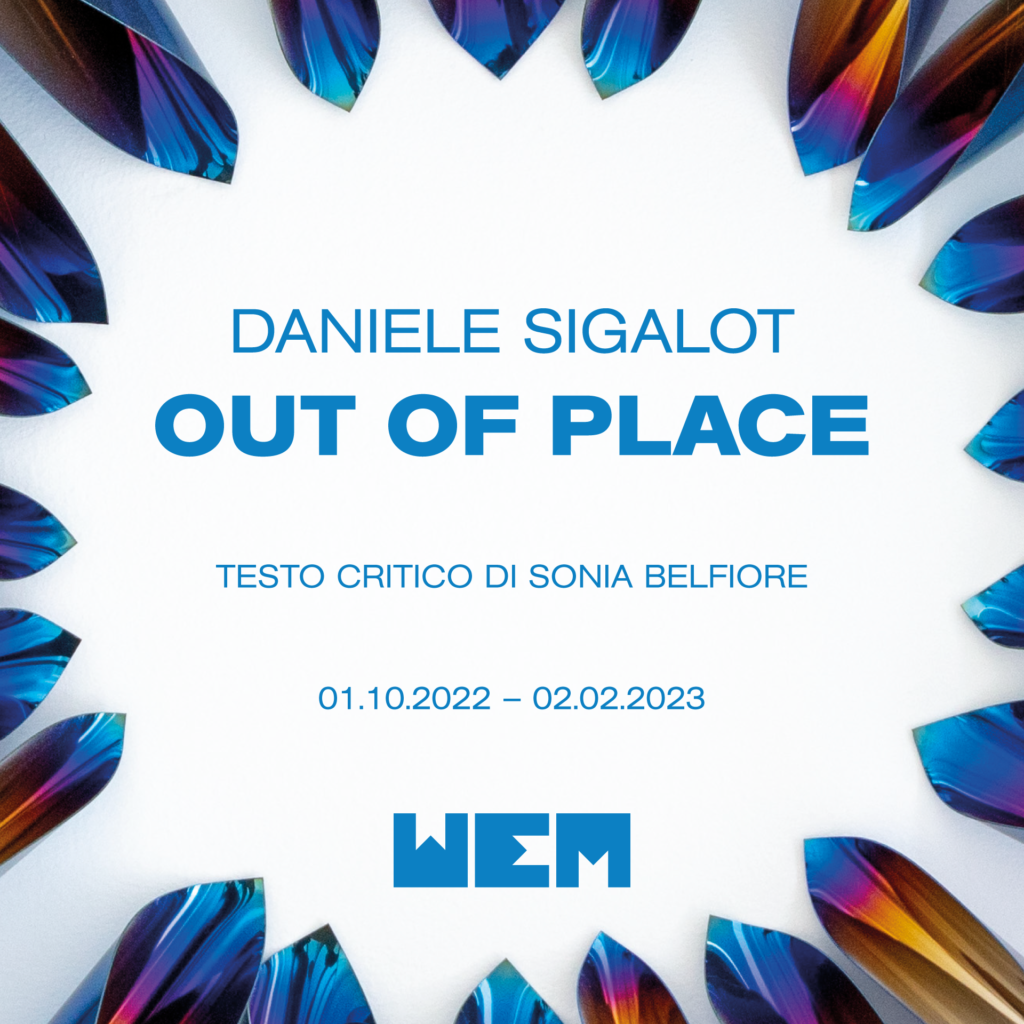
Daniele Sigalot. OUT OF PLACE
1.10.2022 – 30.09.2023
Opening: October, 1 from 6 pm
Strada Romana di Sotto, 2, 28877
Ornavasso – Lago Maggiore (VB)
